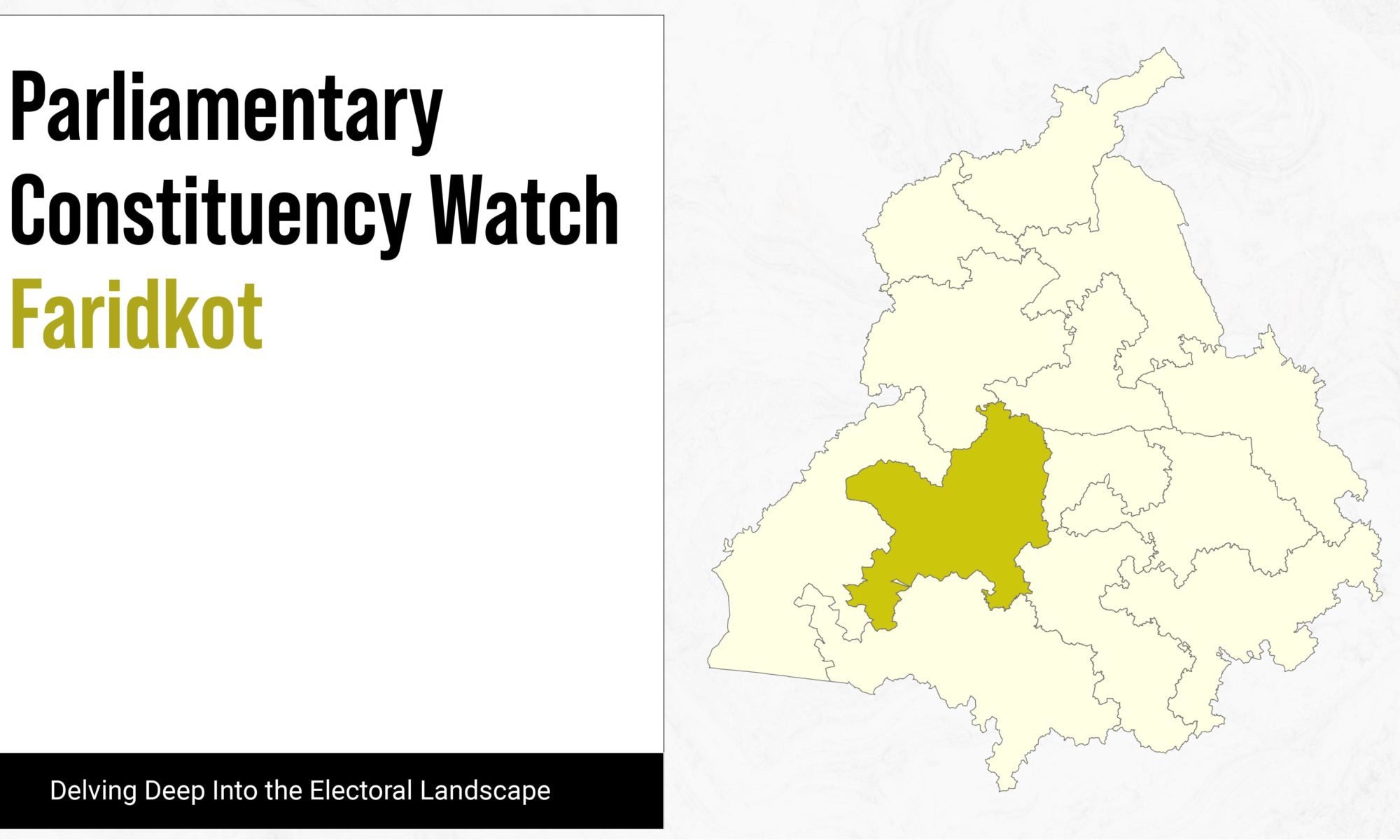Location
Faridkot Lok Sabha constituency is one of the 13 Lok Sabha constituencies in the Indian state of Punjab. It comprises 9 assembly constituencies and 4 districts.
Category
Designated as a Scheduled Caste Constituency.
Voter Turnout
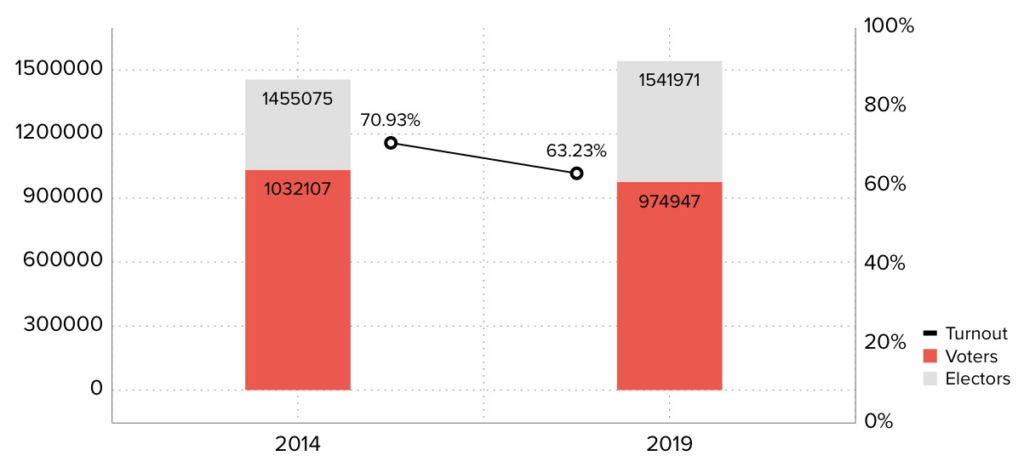
Faridkot Electoral Turnout Rates
During the 2014 elections, the total number of electors was 14,55,075 and the turnout stood at 70.93%, in real numbers- 10,32,107 voters. 2019 witnessed a turnout decrease; out of the 15,41,971 electors, 63.23% of voters exercised their constitutional rights. In real numbers- 9,74,947 voters.
Representation and Results
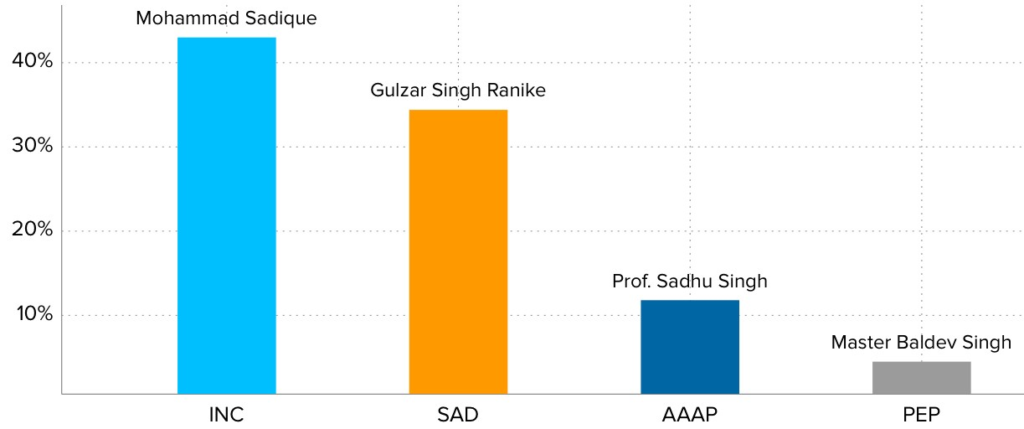
Party Wise Vote Share
2019’s parliamentary election winner, INC’s Mohammad Sadique gained a vote share of 43.00% and defeated BJP’s Gulzar Singh Ranike whose vote share stood at 34.40%. The other prominent candidates in the fray were AAAP’s Prof. Sadhu Singh with 11.80% of vote share and PEP’s Master Baldev Singh with 4.50%.
Voting History –2014 & 2019
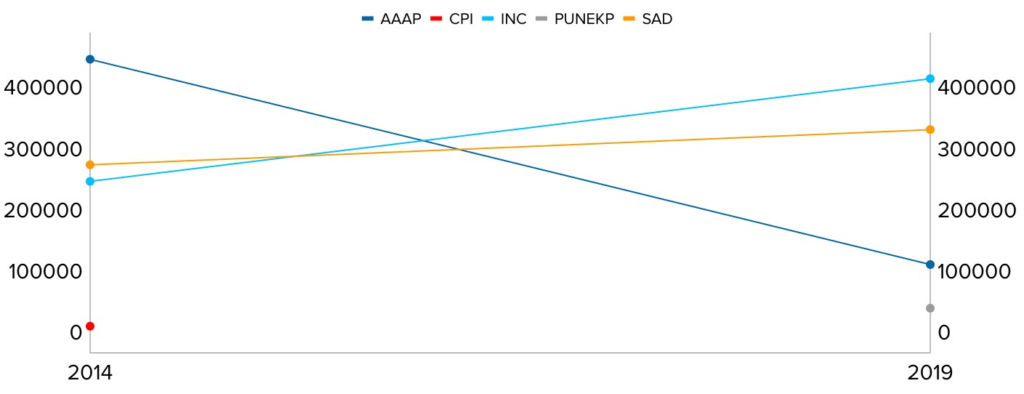
Party Wise Shift in Votes
In 2014, AAAP won the constituency and earned 4,50,751 votes followed by 1,15,319 votes in the 2019 election victory. On the other hand, INC garnered 2,51,222 votes in 2014 and 4,19,065 votes in the 2019 elections.
Parties at helm through the years
In 1977, the Shiromani Akali Dal (SAD) claimed victory before the Indian National Congress (INC) secured power in 1980. A shift ensued as the SAD returned to prominence in 1984 and maintained its dominance with a win in 1989.

Timeline of Winning Parties
The INC reasserted itself in 1991, only to cede ground once more to the SAD, which triumphed in 1996 and 1998. A shift occurred in 1999 when the INC emerged victorious, followed by a comeback win for the SAD in 2004 and continued its dominance with yet another victory in 2009. In 2014, the Aam Aadmi Party (AAP) disrupted the established pattern with its victory, before INC regained its foothold in 2019.
Party-wise success rate
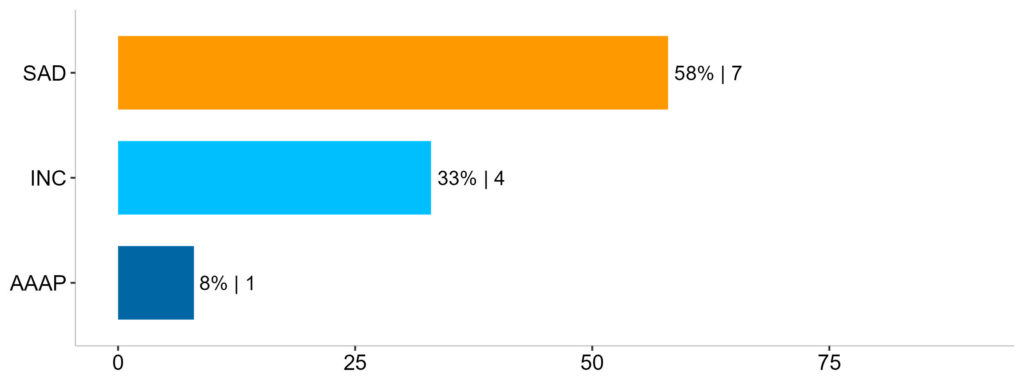
Success Rate
In terms of the success rate in securing the Faridkot Lok Sabha seat, SAD had exhibited the highest rate of success in the elections held since 1977, standing at 58% followed by INC at 33% and AAAP at 8%.
Gender Wise Distribution of Contestants
During the 2009 elections, there were 15 contestants and among them, 10 were males while 5 were females, in percentage- 67% and 33% respectively. In 2014, the total number of contestants increased to 19 out of which 14 were male and 5 were female, in percentage- 74% and 26%.

Gender Wise Distribution of Candidates
In 2019, on the other hand, the total number of contestants further increased to 20 whereby 17 were males and 3 females, in percentage that is 85% and 15% respectively.
Gender wise voter turnout
In 2009, out of a total of 12,85,133 electors, 9,31,110 voters cast their ballots. Of the 6,71,405 male electors, 4,94,056 participated in the election, constituting a turnout rate of 74%. There were 6,13,728 female electors and of that, 4,37,054 chose to vote with a turnout rate of 71%.
In 2014, there are 14,55,075 people who are eligible to vote and 10,32,107 of them chose to exercise their right to vote. Out of these, 7,68,206 were male electors and 6,86,869 were female electors. 71% of male electors (5,48,771) and 70% of female electors (4,83,336) cast their ballots.
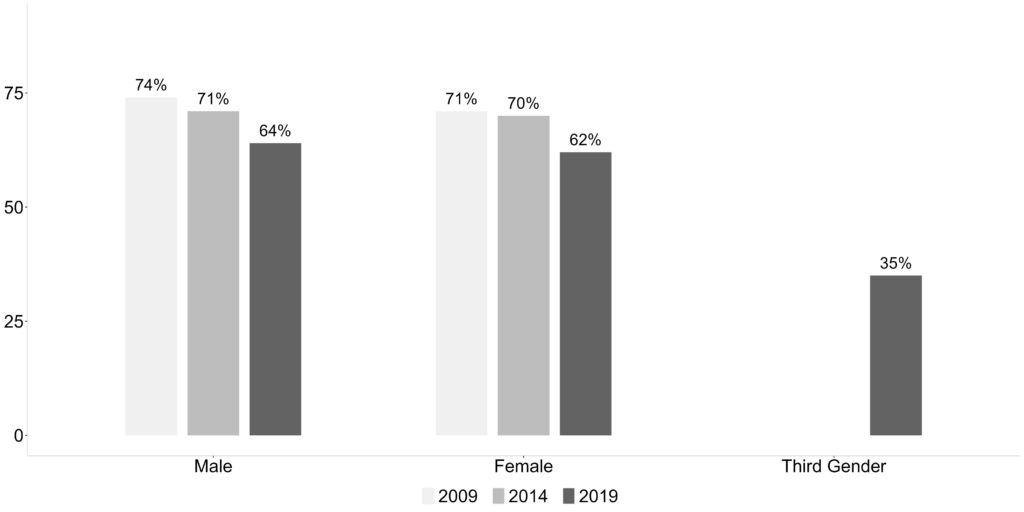
Gender Wise Voter Turnout
The total count of electors in 2019 was 15,41,971 out of which 9,71,009 chose to cast their ballot in the parliamentary elections. Out of 8,18,244 male electors, only 64% voted which is 5,24,952 male voters in real numbers. On the other hand, the voter turnout for females stood at 62% which translates to 4,46,044 voters out of a total of 7,23,690 female electors in real number.
In 2017, transgender people were included as a separate category of the third gender in electoral rolls. There were 37 electors belonging to the third gender category in the parliamentary constituency during the 2019 elections. And 13 of them exercised their newly granted constitutional right to vote and thus their turnout stood at 35%.
Gender-Wise Literacy Rate
We are taking a peek at the gender-wise literacy rate of the Moga, Muktsar, Faridkot and Bathinda districts which are part of the Faridkot parliamentary constituency as literacy is considered an essential indicator of the socioeconomic development of the region.
Moga District
The 2011 census of India has pegged the overall literacy rate of the Moga district at 63%. Gender-wise, the male literacy rate in the district is 66% whereas, for females, the literacy rate stands at 56%.
Muktsar District
The overall literacy rate of the district is 58%. However, when it comes to gender, the literacy rate for males in the district stands at 63% while the female literacy rate is 53%.

Gender Wise Literacy Rate
Faridkot District
The district’s overall literacy rate is 62%. In terms of gender, the literacy rate for male stands at 66% whereas it is 57% for females.
Bathinda District
The district boasts an overall literacy rate of 61% with healthy representation by both males and females at 66% and 55% respectively.
Stay updated on the electoral statistics for parliamentary constituencies and the changing dynamics on Meradesh App. Available on Appstore and Play Store.
Reach your constituents, gain insights into their motivations, and build campaigns based on data-driven strategies with the Meradesh Platform.
Data Source – Meradesh.org
